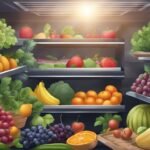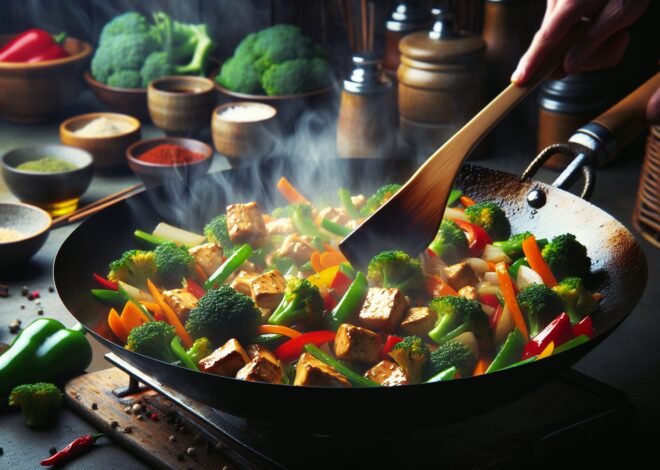
How to Avoid Over-Measuring Ingredients: Tips for Success
Avoid over-measuring ingredients to ensure the perfect outcome in your cooking and baking endeavors. It’s surprising how a dab too much of a component can alter flavors and textures, sometimes even ruining the dish entirely. This guide provides essential tips to mitigate the risk of heavy-handed measuring, offering strategic advice to keep your culinary creations consistently delightful. By understanding portion control, learning proper techniques, and using precise tools, you can elevate your skills from amateur to expert in the kitchen. Dive in to explore practical methods that promise not only accuracy but also save time and resources, ultimately leading to culinary success.
“`html
Understanding the Importance of Accurate Ingredient Measurement
Cooking and baking are arts that require more than just creativity. Precision in measuring ingredients is crucial. Accurate measurement ensures that the final dish aligns with the chef’s vision. Even minor deviations can lead to significant changes in taste, texture, and appearance. Let’s explore why getting ingredient measurements right matters so much in the kitchen.
Common Mistakes When Measuring Ingredients
Many home cooks fall into the trap of eyeballing their ingredients. This can lead to inconsistent results. Overpacking measuring cups with flour or using liquid measures for dry ingredients are frequent blunders. Each ingredient has its own quirks. Mistaking one can derail your recipe’s success.
- Flour: Scooping directly from the bag compacts it, leading to excess amounts.
- Liquids: Using dry measuring cups can result in inaccurate volumes.
- Spices: Not leveling off can lead to overwhelming flavors.
Avoid these pitfalls by understanding the specific needs of each ingredient. This insight helps you maintain consistency in your cooking.
The Impact of Over-Measuring on Recipe Outcomes
Over-measuring can drastically alter a dish. Excess flour can make baked goods dense and dry. Too much sugar might lead to overly sweet desserts that mask other flavors. It’s not just about taste; texture and cooking time can also be affected.
Consider stews and soups. Adding too much salt can render them inedible. The balance of flavors shifts, and recovering from this mistake is often difficult. Ensuring correct measurement from the start prevents these culinary disasters.
Why Precision in Cooking and Baking Matters
Precision is the backbone of reliable recipes. Baking is often described as a science, where each ingredient plays a specific role. Yeast needs exact conditions to rise properly. A slight error in measurement can cause dough not to rise or collapse.
Cooking benefits from precision too. A sauce may need precise acidity to balance flavors. Precision ensures that every dish meets expectations, whether it’s your first attempt or your hundredth.
Techniques and Best Tools for Precise Measuring
Achieving precise measurements in the kitchen requires the right tools and techniques. While it may seem straightforward, choosing the appropriate method for each ingredient can significantly enhance your culinary endeavors. Let’s dive into the best practices and tools that support accuracy in the kitchen.
Choosing the Right Measuring Tools for Each Ingredient
Different ingredients call for different measuring tools. Dry ingredients benefit from using measuring cups designed to hold specific volumes. Liquid measuring cups, often with spouts, are essential for accurate liquid measurements.
- Flour: Scoop and level with a straight edge for accuracy.
- Liquids: A liquid measuring cup allows you to view the meniscus at eye level.
- Butter: Use the marked paper wrapping or a scale for precision.
Selecting the correct tool simplifies the process and guarantees consistency.
How to Properly Use and Read Measuring Cups and Spoons
Understanding proper usage of measuring cups and spoons is vital. For dry cups, scoop the ingredient lightly and level with a knife. Avoid packing the ingredient down unless specified.
- Dry Ingredients: Use a flat edge to level off the top.
- Liquid Ingredients: Read at eye level to ensure the correct measurement.
- Spices: Use the correct spoon size, leveled off for accuracy.
These small adjustments in handling your tools can make a big difference.
Digital Scales vs. Traditional Tools: Pros and Cons
Digital scales offer precision that traditional tools can’t match. They allow for exact measurements, crucial for recipes that require absolute accuracy. However, traditional tools have their place too, especially for quick measurements.
- Digital Scales: Provide exact measurements and are ideal for weight-focused recipes.
- Traditional Tools: Speed up the process and are often easier for quick tasks.
- Balance: Use both, depending on the need for precision or speed.
Understanding the pros and cons of each tool can help you decide which to use for your culinary needs.
Tips for Improving Your Ingredient Measuring Skills
Enhancing your measuring skills is a journey towards becoming a better cook. It’s about more than just following recipes. It’s about developing an intuitive understanding of ingredient relationships. These tips will guide you in refining your skills in the kitchen.
Quick Tips for Reducing Measurement Errors
Errors in measurement can often be avoided with simple adjustments. Start by reading the recipe thoroughly before gathering your ingredients.
- Consistent Tools: Use the same set of measuring tools for consistency.
- Ingredient Prep: Prep ingredients by sifting or chopping before measuring.
- Double-Check: Verify measurements twice to minimize errors.
These strategies help in maintaining accuracy and enhancing your cooking confidence.
Practicing Mindfulness in the Kitchen
Mindfulness in cooking means being present while preparing and measuring ingredients. Focus on each task, paying attention to detail.
- Concentration: Avoid distractions to ensure precision.
- Environment: Keep your workspace organized to facilitate accuracy.
- Intent: Approach each measurement with care and intention.
This practice not only improves your measurements but also enhances the overall cooking experience.
Educating Yourself on Proper Ingredient Techniques
Knowledge is power in the kitchen. Understanding the science behind ingredient interaction elevates your cooking.
- Research: Explore how different ingredients interact and affect recipes.
- Experiment: Test small batches to see the impact of precise measurements.
- Learn: Engage with cooking shows, books, and classes to expand your understanding.
This continuous education helps you grow as a culinary artist, ensuring that your dishes consistently delight.
“`
Conclusion
Over-measuring ingredients can lead to wasted food and altered recipe outcomes. Accurate measurement ensures better consistency and taste in dishes. Using proper tools, like measuring spoons and cups, is essential for precision. Understanding ingredient conversions can help in scaling recipes accurately. Practicing mindful measuring can save money and reduce kitchen waste.
“`html
FAQ
Why is over-measuring ingredients a common cooking mistake?
Over-measuring ingredients often occurs due to the use of improper tools or a lack of attention to detail. This mistake can lead to unbalanced flavors or textures, affecting the overall quality of the dish.
What are the best ways to prevent over-measuring ingredients in recipes?
Using precise tools such as digital scales and measuring cups helps ensure accuracy. Following recipe instructions carefully and double-checking measurements reduces the risk of adding too much of any ingredient.
How does over-measuring ingredients affect the taste and texture of food?
Excess ingredients can overpower flavors, making a dish too salty, sweet, or bitter. It can also alter the texture, leading to dense cakes or soggy bread.
What tools can help avoid over-measuring ingredients in baking?
Investing in digital kitchen scales, precise measuring spoons, and cups ensures more accurate measurements. These tools help maintain the desired taste and texture in baked goods.
Can over-measuring ingredients impact nutritional values in meals?
Yes, it can skew the nutritional content, increasing calories or sodium levels. Accurate measurements help maintain balanced nutrition in recipes.
How do professional chefs ensure they don’t over-measure ingredients?
Professional chefs rely on precise tools and techniques. They often use scales for accuracy and train to develop a keen sense of proportion and measurement.
“`











